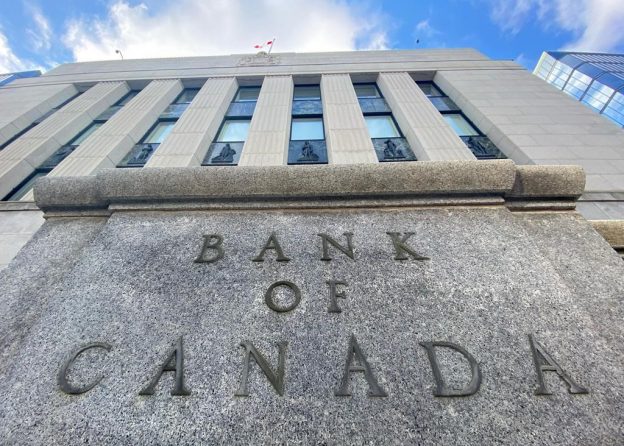Inflation internecine among the financial central planners of Canada is heating up. We have a deputy minister nudging the finance minister to pressure the central bank not to raise interest rates, claiming the economy has room to grow and a hike is premature. Clearly, this mandarin is not in the least gearing up to bust inflation. On its record, neither can the Bank of Canada be accused of waging the good fight, with the result that amidst an ostensible economic boom the Canadian dollar continues to flail.
While plumping for yet more inflation leeway, the aforementioned deputy minister, a previous employee of the Bank of Canada, is now preparing to negotiate new inflation targets with the bank. The entire inbred crowd is also set to select the new governor of the Bank of Canada. To float questions about the alleged independence of the bank is to slight the reader, so I’ll refrain.
Clearly, the campaign for governor of the Bank of Canada is marked by an emphasis on maintaining or letting inflation edge up. And why not? Contrary to well propagated opinion, inflation originates in an increase in the money supply by the government and its handmaid, the central bank. It’s a complicated process, facilitated largely by the banking system known as fractional reserve banking. The central bank and the banks, yes, with government imprimatur, are engaged in a process of issuing paper notes uncovered by real assets (money). This enables the banks and the central bank to enter the market with fictive credit, and bring about initially low interest rates and a boom. What flows from these jumbled market signals is investment–jobs included–that should not always have happened.
It’s as economist Roger Garrison cautions, “growth rates and unemployment rates by themselves don’t tell the whole story,” since they don’t distinguish between genuine growth and unsustainable boom. In other words, who is to tell if the growth touted by government is propelled by genuine savings and investment or by the bank’s injecting of new money into credit markets?
The political corollary for the Canadian Federal government is not hard to divine. A credit-induced boom flaunts rosy, often misleading, employment figures. And what government on the eve of elections wants to tamper even in the slightest with those? Make no mistake, Canadian financial politicos are neo-Keynesians to the core; credit expansion in the service of labor demands is all in a day’s work. Bottom line: “sufficient inflation” nets a politician the optics of high employment, to say nothing of license to continue inflating the money supply.
Economists are mostly silent on the rickety moral scaffolding that undergirds fractional reserve banking. Some, however, refuse to slip between the sheets with the kleptocracy. Posted on the office door of economics professor Tom DiLorenzo of Loyola College, is a newspaper article about two college students who were arrested for counterfeiting. A standing, and as yet unmet, challenge DiLorenzo issues to his students is to explain how those actions differ from the central bank’s “money creation.” The prize, a large pizza, is still up for grabs.
Bereft of similar instruction, most of us would be hard pressed to query the form of commercial banking we identify with deposit banking. We are vaguely–if only intuitively–aware that the contract between bank and client constitutes a bailment contract, to wit, we expect the bank to warehouse our money and it to be fully redeemable like the Chippendale chair (I wish) we entrust into storage. In reality, a run on the bank by every client – and the bank would collapse.
With fractional reserve banking, the bank is only good for a fraction of the money, since the Central Bank increases the reserves it gives to banks, and the banks, in turn, pyramid their respective lending capabilities. Unbacked by money (real assets), paper notes then flood the market, diminishing purchasing power, and benefiting those in proximity to power.
The jurisprudence that has evolved to finesse this fraud accords the fractional reserve banker the status of a “good faith” debtor rather than a custodian of his client’s money. Legally, the money is the banker’s asset. The logic of the law thus has the money belonging to client and bank simultaneously. On flooding the market with additional money substitutes when the quantity of money is unchanged, economists Hans H. Hoppe, Jorg G. Hulsmann and Walter Block say this: “Titles to money are–and should be–backed by money in the same way and for the same reason as titles to cars are and should be backed by cars,” and house titles backed by houses rather than “parts of planes and bikes.”
©2000 By Ilana Mercer
The Calgary Herald
September 7
CATEGORIES: Canada, Economics, Federal Reserve Bank, Inflation, Political Economy, Politics & Policy

 print
print